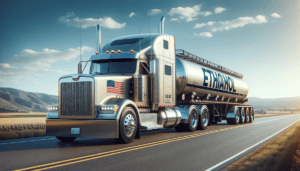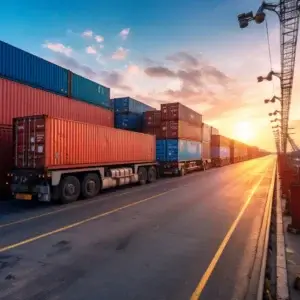Controlled-release fertilizers have become increasingly popular in recent years due to their numerous benefits to agricultural practices. Unlike traditional fertilizers that tend to release nutrients rapidly, often resulting in over-fertilization, controlled-release fertilizers gradually release nutrients over an extended period, providing plants with a consistent supply of nutrients without the risk of nutrient loss.
Despite their proven importance, controlled-release fertilizers are not widely used, mainly due to insufficient knowledge about their application and unique shipping challenges. Therefore, this topic aims to delve into the specifics of controlled-release fertilizers and the logistics involved in their secure and efficient transportation.
What are Controlled Released Fertilizers?
Controlled-released fertilizers are designed to release plant nutrients slowly and continuously over an extended period, unlike traditional fertilizers that release their nutrients rapidly. These fertilizers typically consist of a granular fertilizer coated with a layer of polymer, resin, or sulfur, which controls the release of nutrients.
The polymer or resin coating controls nutrient release by slowing water diffusion into the granule, dissolving the fertilizer, and releasing nutrients. The rate of nutrient release depends on the coating’s thickness and environmental conditions, such as temperature, moisture, and microbial activity. This slow-release mechanism ensures the nutrients are released gradually over an extended period, providing plants with a consistent and continuous supply of nutrients without the risk of over-fertilization.
Manufacturers typically customize controlled-release fertilizers to release specific nutrients at different rates depending on the plant’s growth stage and nutrient requirements. For instance, some controlled-release fertilizers release nitrogen and phosphorus quickly to support vegetative growth, while others release more slowly to support fruiting and flowering.
Types of Controlled Released Fertilizers
Farmers are exposed to several types of controlled-release fertilizers, including sulfur-coated, polymer-coated, and resin-coated urea fertilizers. Each controlled-release fertilizer has unique properties and characteristics that make them suitable for different crops, soils, and environmental conditions. Here are some of the most common types;
● Sulfur-coated Urea (SCU)
This type of controlled-released fertilizer involves coating urea granules with a layer of elemental sulfur. This coating gradually oxidizes over time, releasing the urea into the soil slowly and steadily.
The rate of nutrient release can be tailored by adjusting the thickness of the sulfur coating and considering various elemental factors, from temperature to moisture levels and soil microbial activity. Most growers use the SCU fertilizer in slow-growing crops such as turfgrass and other plant species that benefit from gradually releasing nutrients over an extended period.
● Polymer-coated Urea (PCU)
For this type of fertilizer, urea granules are coated with a thin layer of polymer which gradually releases the urea into the soil over an extended period. Typically, this period could range from weeks to months, depending on the coating thickness.
The polymer-coated urea fertilizer is ideal for various agricultural settings, including row crops, orchards, and vineyards. For this application, it provides a slow and steady supply of nutrients to support crop growth and yield. Furthermore, PCU’s controlled release mechanism can help reduce the risk of over-fertilization and minimize nutrient loss due to leaching or volatilization, leading to more efficient and sustainable agricultural practices.
● Resin-coated Fertilizers (RCF)
RCFs are a form of controlled-release fertilizer that involve coating granules with a layer of synthetic resin. This resin layer serves as a barrier, which controls the release of nutrients into the soil by gradually breaking down over time. Depending on the coating’s thickness, RCFs can provide a slow and steady release of nutrients over a period ranging from several weeks to several months.
This type of fertilizer is ideal for various horticultural settings, including turfgrass, ornamental plants, and container-grown species, where it maintains consistent nutrient levels and supports healthy growth. RCF’s controlled-release mechanism also reduces the environmental impact of fertilization practices.
● Slow-release fertilizers (SRF)
Slow-release fertilizers (SRF) are controlled-release fertilizers that typically blend various nutrient sources comprising synthetic and organic materials. The release of nutrients into the soil is governed by the rate of microbial activity, which, in turn, is impacted by several factors such as temperature, moisture, and soil type. SRFs can provide a steady supply of nutrients to plants over a prolonged time, ranging from several months to several years, depending on the specific formulation.
This fertilizer is ideal for agricultural and horticultural applications, including fruit trees, vegetable crops, and container-grown plants. By controlling the nutrient release rate, SRFs can also help to minimize nutrient losses and reduce the frequency of fertilization, leading to more agricultural practices.
Choosing between these fertilizers depends on specific factors, from the crop type to the soil type and climatic conditions. First, selecting a fertilizer with the right nutrient balance for your growing plants is crucial. This consideration should include fertilizers with a balanced N-P-K ratio and other essential micronutrients.
The release rate, soil type, climate, cost, and application method are other vital factors when choosing controlled-release fertilizers. Opting for the right fertilizer for specific growing conditions helps to improve plant growth and reduce the amount of fertilizer needed over time.
Advantages of Using Controlled Release Fertilizer
Controlled-release fertilizers offer several advantages in comparison to traditional fertilizers. Here are some of the most significant benefits of using controlled fertilizers;
● Nutrient Efficiency
One of the most significant benefits of using controlled-release fertilizers is that they can improve nutrient efficiency by delivering nutrients to plants over an extended period. This slow-release process means plants can use the nutrients as they need them, reducing the risk of leaching, volatilization, or runoff.
● Reduced Application Frequency
Controlled-release fertilizers require fewer applications than traditional fertilizers, which can be more time and cost-effective. With conventional fertilizers, frequent applications are needed to maintain nutrient levels in the soil. In contrast, controlled-release fertilizers can provide nutrients for several months or even up to a year, depending on the fertilizer type.
● Environmental Benefits
Controlled-release fertilizers effectively reduce the risk of nutrient leaching, runoff, and volatilization, which can contribute to environmental pollution. By reducing the need for frequent applications, controlled-release fertilizers can also help to reduce the overall amount of fertilizers used, which can further minimize environmental impact.
● Improved Plant Growth
Farmers that use controlled-release fertilizers are treated to a more consistent supply of nutrients to their plants, which can lead to improved growth, quality, and yield. Additionally, the slow-release process can help to prevent nutrient deficiencies or toxicities, which can negatively impact plant growth.
● Reduced Labor Costs
With fewer applications, controlled-release fertilizers can reduce labor costs associated with fertilizer application. This feature can be especially beneficial for large-scale farmers and growers who must cover a significant amount of land.
● Flexibility
Controlled-release fertilizers come in various formulations, allowing growers to choose the best product for their needs. Different release rates, nutrient ratios, and application methods are available to accommodate different plant types, soil types, and environmental conditions.
Shipping Controlled Release Fertilizers
The efficient and timely delivery of controlled-release fertilizers is crucial for agricultural operations globally. However, these fertilizers’ unique properties and characteristics also pose challenges during transportation and storage, which shippers must carefully manage to maintain fertilizer efficiency.
Challenges in Shipping Controlled Release Fertilizers
One significant challenge when shipping controlled-release fertilizers is maintaining optimal temperature and humidity levels. These fertilizers are extremely sensitive to changes in temperature and moisture, which can significantly impact their efficacy.
When exposed to high temperatures, the coating on these fertilizer granules can break down, causing the release of nutrients to accelerate. Such exposure can result in the over-fertilization of crops, which can be detrimental to produce health and yield. Conversely, exposure to low temperatures can cause the release of nutrients to slow down, reducing the fertilizers’ efficacy.
These fertilizers are also designed to be water-resistant, and any exposure to moisture can cause coatings on the granules to break down, leading to premature nutrient release. Additionally, high humidity levels can cause fertilizers to clump together, making them more challenging to apply evenly to crops. Therefore, monitoring these factors closely during transportation and storage is crucial to ensure that the fertilizers arrive at their destination in optimal condition.
Finally, adherence to local regulations and transportation guidelines is essential when shipping controlled-release fertilizers. Failure to comply with these guidelines can result in delays, fines, and potential legal issues. For new and experienced shippers, adhering to various regulations depending on the location can also be challenging.
Regulation and Compliance
The specific regulations and compliance requirements for shipping controlled-release fertilizers can vary depending on the region and country of origin. However, some prevalent standards are typically followed when transporting these fertilizers.
One of the most important regulatory requirements is proper labeling. This is because controlled-release fertilizers are considered HazMat cargo and must be labeled according to local and international transportation guidelines. The labels should include information such as the product name, the net weight of the fertilizer, and any potential hazards associated with the product.
Another prevalent regulation for shipping controlled-release fertilizers is compliance with transportation regulations. These regulations specify the proper handling, storage, and transportation procedures that shippers must follow to ensure the product’s safety and that of those handling it. These regulations may include requirements for appropriate packaging, proper handling of hazardous materials, and adherence to specific transportation guidelines.
In addition, there may be compliance requirements related to environmental concerns. These regulations may require that fertilizers be transported to minimize their ecological impact, such as by using fuel-efficient transportation methods or limiting the amount of packaging used.
Overall, compliance with regulations and guidelines is critical when shipping such fertilizers. Working with a knowledgeable and experienced shipping provider familiar with the specific rules and compliance requirements is vital. By following these regulations and compliance standards, agricultural professionals can ensure their controlled-release fertilizers’ safe and practical transport.
Best Practices For Shipping Controlled-Release Fertilizers
According to a report by Grand View Research, the global market for controlled-release fertilizers was valued at USD 3.17 billion in 2020 and should reach USD 4.55 billion by 2028, growing at a CAGR of 4.5%. This growth results from the increasing demand for high-quality crops and the need for sustainable agricultural practices.
With the increasing popularity of controlled-release fertilizers, the demand for their shipping and transportation will likely continue to rise globally. As such, we discuss some of the best practices for controlled-release fertilizers.
● Choose the Right Shipping Provider
Choosing the right shipping provider is critical when shipping controlled-release fertilizers. A knowledgeable and experienced provider will be familiar with the specific shipping processes, including regulations and compliance requirements in the cargo’s origin and destination. They will also have the necessary equipment and expertise to handle hazardous materials safely.
● Proper Packaging and Labeling
Proper packaging and labeling are essential when shipping controlled-release fertilizers. As mentioned earlier, these fertilizers are considered hazardous materials and must be labeled accordingly to local and international guidelines. The labels should include information such as the product name, the fertilizer net weight, and any potential hazards associated with the product.
On the other hand, the packaging should be sturdy and protect the fertilizers from damage during transportation and storage. It will also help if the packaging is water-resistant to protect the fertilizers from exposure to moisture.
● Temperature and Moisture Control
Temperature and moisture control is another crucial practice when shipping controlled-release fertilizers. These fertilizers should be stored in a cool, dry place, away from direct sunlight and heat sources. Conversely, controlled-release fertilizers are designed to be water-resistant, and any moisture exposure can cause the granules’ coatings to break down. Hence, they must be stored in a location that protects them from high humidity.
● Compliance with Regulations
It is always challenging to identify and comply with every shipping regulation; however, it’s a process that shippers must adhere to. Thankfully, shippers can streamline this process by working with experienced shipping providers familiar with the specific regulations and compliance requirements.
Ship Your Controlled-Release Fertilizers With Total Connection
Shipping controlled-release fertilizers require specialized knowledge and expertise to ensure products arrive safely and on time. If you’re a farmer or distributor looking for a reliable shipping partner for your controlled-release fertilizers, look no further than Total Connection.
With years of experience in hazardous material shipping and a team of experts, Total Connection can ensure that your fertilizers are transported and stored under appropriate conditions. We understand the intricacies of shipping and are committed to providing high-quality shipping services that meet your unique needs.
Trust Total Connection to help you ship your controlled-release fertilizers with confidence and ease.





